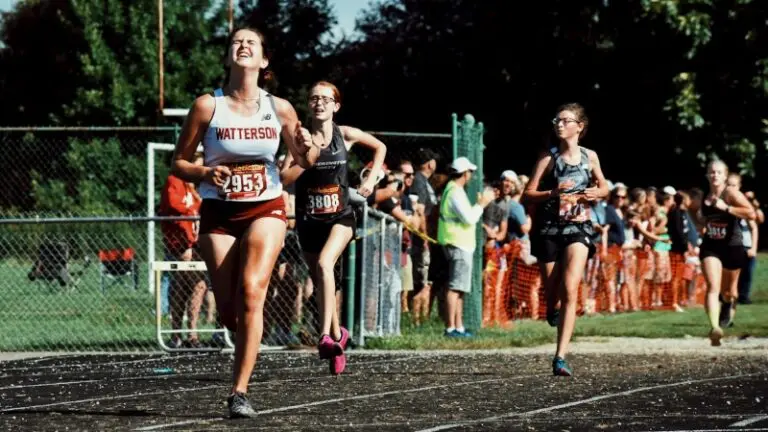Data on Athletes’ Mental Health Goes Beyond Physical Health
Women, BIPOC, and LGBTQIA+ student-athletes reported the highest rates of mental health struggles, according to the report.

Women, BIPOC, and LGBTQIA+ student-athletes reported the highest rates of mental health struggles, according to the report.
These findings also hold true for student-athletes. According to the most recent NCAA Student-Athlete Health and Wellness Study, up to 44 percent of student-athletes report experiencing mental health symptoms on a daily basis. Women, BIPOC, and LGBTQIA+ student-athletes reported the highest rates of mental health struggles, according to the report.
As more athletes, from Olympians to student-athletes, speak out about their mental health struggles, it’s clear that mental well-being is as critical as physical health for achieving success in sports. To assess how athletics impact mental health, Charlie Health looked at the numbers, including data on the state of student-athlete mental health and rates of anxiety and depression among elite athletes.
Roughly one in five athletes may meet clinical cut-offs for anxiety or depression symptoms
A 2018 study of over 300 elite athletes found that about one in five met clinical cut-offs for anxiety or depression symptoms on average. Symptoms varied significantly between female and male athletes, the study found: More than double the percentage of female athletes struggled with anxiety or depression symptoms as compared to their male counterparts (26 percent versus 10 percent, respectively).
Training over 14 hours per week can worsen athletes’ mental health
While exercise is often linked to better mental health, that’s not always the case for elite athletes — according to one 2018 study, increasing training from 7–10 hours per week to over 14 hours showed minimal additional benefits. In fact, female athletes training over 14 hours per week reported worse mental health.
Nearly one in five female athletes may struggle with an eating disorder
In a study of top middle and long-distance female runners from the late 1990s, athletes were surveyed about eating disorders, demographics, training, diet, and health. Results showed that nearly one in five (16 percent) had an eating disorder — a higher prevalence than typically seen in the general public. Eating disorders are also more often seen among female student-athletes as compared to their male counterparts, data shows.
Opioid misuse is about four times higher among some retired NFL players than the general public
Prescription opioid misuse is a growing public health concern, particularly among former NFL players. A 2021 study of over 300 retired NFL players who reported using prescription opioids during their careers found that just over one-quarter (26.2 percent) used prescription opioids in the past 30 days. Of those using opioids, about one in 10 retired players (11.9 percent) misused them — about four times the rate of the general public’s misuse, according to the study. The study also found that players who used opioids to function while in the NFL were more likely to use opioids recently, and those who used them to reduce stress and anxiety had a higher chance of misusing them in the past 30 days.

Up to two in five student-athletes report feeling overwhelmed every day — but improvements are being made in student-athlete mental health
Like elite athletes, many student-athletes struggle with mental health concerns. The most recent NCAA study involving over 23,000 student-athletes found that about two in five female student-athletes (44 percent) and one in five male athletes (17 percent) reported feeling overwhelmed “constantly” or “most every day.”
Although these numbers are still concerning, they reflect progress in supporting student-athlete mental health, as the latest survey shows a decrease in mental health concerns across nearly all categories compared to the 2020 and 2021 surveys. In men’s sports, feeling constantly overwhelmed dropped from 25 percent to 17 percent, and feeling mentally exhausted dropped from 22 percent to 16 percent, with the most significant improvements in Division I. In women’s sports, the 44% of athletes who reported feeling overwhelmed is down from 47 percent, and 35 percent reported feeling mentally exhausted (down from 38 percent), showing smaller decreases compared to men’s sports.
How to support athletes’ mental health
Supporting athlete mental health is, first and foremost, a systemic issue. Above all, coaches, colleges, and professional athletic organizations need to ensure athletes have access to needed mental health resources. Below are some other steps that can be taken if you are trying to support athletes’ mental health.
Promote open conversations about mental health
Encourage athletes to talk openly about their mental health without fear of stigma or judgment. Create an environment where discussing mental health is as normal as discussing physical health. This can look like professional athletes speaking out about their mental health needs and coaches and teammates fostering a culture of destigmatization around seeking mental healthcare.
Integrate mental health into training
Incorporate mental health practices, such as mindfulness, meditation and mental resilience training, into regular athletic programs. This can help athletes manage stress and improve focus. (Similar practices have been shown to benefit professional athletes in the NFL and student-athletes alike.)
Seek mental health support
Recognize that each athlete’s mental health needs are unique. Personalized support plans that consider the specific challenges an athlete faces can be more effective. Normalize seeking help for mental health issues by emphasizing that it’s a sign of strength, not weakness. Make sure athletes know how to access the resources available to them.
This story was produced by Charlie Health and reviewed and distributed by Stacker Media

